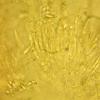
04-01-2026 17:45
 Stephen Martin Mifsud
Stephen Martin Mifsud
I was happy to find these orange asmocyetes which

03-01-2026 13:08
Niek SchrierHi all,We found groups of perithecia on a Lecanora

29-12-2025 17:44
Isabelle CharissouBonjour,J'aimerais savoir si d'autres personnes au

02-01-2026 17:43
MARICEL PATINOHi there, although I couldn't see the fruitbody, I

01-01-2026 18:35
Original loamy soil aside a artificial lake.The co

31-12-2025 19:27
Collected from loamy soil, at waterside (completel
Cercophora with parasitic discomycete
Bernard Declercq,
08-11-2012 16:22
 Hi all,
Hi all,I recently collected white discomycetes on Galloway cow dung. But when looking closer, each apothecium was originating from a semi-immersed pyrenomycete.
Discomycete:
Apothecia superficial, discoid, subsesile, disc plane, 0,8-1,2 mm diam., white, slightly yellowing when hurted.? Asci cylindrical-clavate, 8-sp., sp.2-ser., IKI-, 37,5-58x6-7 µm, arising from croziers. Spores narrowly ellipsoid, 4,5-7x2,2-2,5 µm, smooth, hyaline, without lipid content. Paraphyses slender, base 1,5 µm diam., septate, with several VB's. Ectal excipulum of hyaline textura prismatica, cells becoming smaller towards the margin, with paraphysis-like to tapering marginal hairs up to 40x2-3 µm.
Bernard Declercq,
08-11-2012 16:32

Re : Cercophora with parasitic discomycete
... and here the pyrenomycete:
Perithecia semiimmersed, ovoid, papillate, 0,5-0,6 mm diam., 0,65 mm high, black.? Asci clavate with tapering stalk, 8-sp., apical ring 2,5-3x1 µm (triangular in cross section) and echinulate, subapical globulus 4-5 µm diam., 235-250x28-35 µm. Spores first elongate fusiform, geniculate, 38-41µm long, hyaline, guttulate, when mature composed of an ellipsoid head part, (0)1-septate, dark brown, 20-23x9,5-10,5 µm, with subapical pore and truncate basal end and a cylindrical, hyaline, collapsing pedicel, 13,5-16x5-5,5 µm, with hyaline lash-like appendages 25-40x3 µm at both ends. Periderm with surface layer composed of dark brown polygons with radially arranged, prismatic cells; second layer of pale brown textura angularis. Papil densely covered by short, dark brown, thick-walled hairs 2-2,5 µm diam. with obtuse tip. Ostiolum covered by hyaline periphyses 25x2 µm.
This is probably a Cercophora.
Any help for further determination of both ascos is welcome.
Bernard
Perithecia semiimmersed, ovoid, papillate, 0,5-0,6 mm diam., 0,65 mm high, black.? Asci clavate with tapering stalk, 8-sp., apical ring 2,5-3x1 µm (triangular in cross section) and echinulate, subapical globulus 4-5 µm diam., 235-250x28-35 µm. Spores first elongate fusiform, geniculate, 38-41µm long, hyaline, guttulate, when mature composed of an ellipsoid head part, (0)1-septate, dark brown, 20-23x9,5-10,5 µm, with subapical pore and truncate basal end and a cylindrical, hyaline, collapsing pedicel, 13,5-16x5-5,5 µm, with hyaline lash-like appendages 25-40x3 µm at both ends. Periderm with surface layer composed of dark brown polygons with radially arranged, prismatic cells; second layer of pale brown textura angularis. Papil densely covered by short, dark brown, thick-walled hairs 2-2,5 µm diam. with obtuse tip. Ostiolum covered by hyaline periphyses 25x2 µm.
This is probably a Cercophora.
Any help for further determination of both ascos is welcome.
Bernard
Hans-Otto Baral,
08-11-2012 16:55

Re : Cercophora with parasitic discomycete
Hi Bernard
do you have a photo of the paraphyses with VBs?
Unguiculella tityrii grows similar but is of course very different and does not seem to have VBs.
Zotto
do you have a photo of the paraphyses with VBs?
Unguiculella tityrii grows similar but is of course very different and does not seem to have VBs.
Zotto
Andrew N. Miller,
08-11-2012 17:37

Re : Cercophora with parasitic discomycete
This is very weird! I have never read about such a thing in the literature. I would love to look at this Cercophora specimen (and possibly sequence it) if you can send it to me.
The pyreno is much cooler than the disco - sorry Zotto... ;o)
Andy
The pyreno is much cooler than the disco - sorry Zotto... ;o)
Andy
Gilbert MOYNE,
08-11-2012 18:08
Re : Cercophora with parasitic discomycete
Je pense avoir déjà rencontré ce champignon sur Schizothecium conicum croissant en culture sur bouses de vache, jamais sur d'autres supports.
J'ai toujours eu beaucoup de difficultés à observer des paraphyses.
En revanche, la marge est ornée de poils hyalins, plus ou moins en crochet au sommet, 25-40 x 3-4 µm
Asques cylindriques non atténués à la base, 40-45 x 6-10
Spores massées au sommet de l'asque, bisériées, elliptiques, hyalines, sans goutte, 7-8 x 3,5-4. Je n'ai jamais pu mettre un nom dur ces récoltes.
Récolte du 21/05/2005.
Je sais que Bruno Coué la rencontrait souvent aussi.
Gilbert
J'ai toujours eu beaucoup de difficultés à observer des paraphyses.
En revanche, la marge est ornée de poils hyalins, plus ou moins en crochet au sommet, 25-40 x 3-4 µm
Asques cylindriques non atténués à la base, 40-45 x 6-10
Spores massées au sommet de l'asque, bisériées, elliptiques, hyalines, sans goutte, 7-8 x 3,5-4. Je n'ai jamais pu mettre un nom dur ces récoltes.
Récolte du 21/05/2005.
Je sais que Bruno Coué la rencontrait souvent aussi.
Gilbert
Norbert Heine,
08-11-2012 18:13

Re : Cercophora with parasitic discomycete
Hi Bernard,
my first idea for the discomycete was Unguiculella tityrii, but after reading Zottos comment, I'm not longer sure about this.
Fine literature you can find in this discussion from last year:
http://www.ascofrance.com/forum/16187/search-more-literature?
Maybe, that the pyrenomycete is Cercophora sordarioides, which has a verruculose subapical globulus AND septate ascospores but not such hairs as you described.
Two interesting problems!
Norbert
my first idea for the discomycete was Unguiculella tityrii, but after reading Zottos comment, I'm not longer sure about this.
Fine literature you can find in this discussion from last year:
http://www.ascofrance.com/forum/16187/search-more-literature?
Maybe, that the pyrenomycete is Cercophora sordarioides, which has a verruculose subapical globulus AND septate ascospores but not such hairs as you described.
Two interesting problems!
Norbert
Gilbert MOYNE,
08-11-2012 18:26
Re : Cercophora with parasitic discomycete
Voici un rapide croquis des éléments microscopiques
Norbert Heine,
08-11-2012 19:05
Hans-Otto Baral,
08-11-2012 19:15

Re : Cercophora with parasitic discomycete
Hi Norbert and others
I was thinking that especially the spores are much too narrow for U. tityrii. That species I measured as follows:
Asci *45-70 x 8.5-10 µm?, Spores *6-7.7 x 3.6-4.2 µm?.
Bernd Fellmann measured Ascus: 70 x 8?, Sp:7-8 x 3,5-4.
If Bernards spores are actually such small, it is hard to believe that it is the same. Bernard reported only straight hairs, which would also be quite strange for an Unguiculella. Also the paraphyses are partly projecting and hooked in U. tityrii.
Zotto
I was thinking that especially the spores are much too narrow for U. tityrii. That species I measured as follows:
Asci *45-70 x 8.5-10 µm?, Spores *6-7.7 x 3.6-4.2 µm?.
Bernd Fellmann measured Ascus: 70 x 8?, Sp:7-8 x 3,5-4.
If Bernards spores are actually such small, it is hard to believe that it is the same. Bernard reported only straight hairs, which would also be quite strange for an Unguiculella. Also the paraphyses are partly projecting and hooked in U. tityrii.
Zotto
Bernard Declercq,
08-11-2012 20:42

Re : Cercophora with parasitic discomycete
Hi,
First about the discomycete.
Thank you for your interesting reactions.
Herewith a photo of the paraphyses with VB's. Just like in U. tityri, two types of paraphyses are present: most of them are cylindrical, a few are tapering. I think that Unguiculella is a good genus for the presented discomycete. Contrary to U. tityri the paraphyses are more or less as long as the asci. As a consequence, while the disc of U. tityri is finely roughened, the disc of my discomycete is smooth. And, as already mentioned by Zotto, the asci and the spores are narrower. Moreover marginal and lateral hairs are scarce to almost absent while the drawing of Huhtinen & Spooner (2005) shows a really hairy discomycete.
Bernard
First about the discomycete.
Thank you for your interesting reactions.
Herewith a photo of the paraphyses with VB's. Just like in U. tityri, two types of paraphyses are present: most of them are cylindrical, a few are tapering. I think that Unguiculella is a good genus for the presented discomycete. Contrary to U. tityri the paraphyses are more or less as long as the asci. As a consequence, while the disc of U. tityri is finely roughened, the disc of my discomycete is smooth. And, as already mentioned by Zotto, the asci and the spores are narrower. Moreover marginal and lateral hairs are scarce to almost absent while the drawing of Huhtinen & Spooner (2005) shows a really hairy discomycete.
Bernard
Michel Delpont,
08-11-2012 20:45

Re : Cercophora with parasitic discomycete
Hi Bernard.
Have you looked to Cercophora mirabilis .Have you also a section of the wall?? I do not think whether C.sordarioides by cons I've never met this little white disco.?
Michel.
Have you looked to Cercophora mirabilis .Have you also a section of the wall?? I do not think whether C.sordarioides by cons I've never met this little white disco.?
Michel.
Bernard Declercq,
08-11-2012 20:53

Re : Cercophora with parasitic discomycete
Hi Michel,
C. mirabilis has a very different peridium surface, the spore head was never mentioned with a traverse septum and the spore pedicel is 2-3 times as long.
Bernard
C. mirabilis has a very different peridium surface, the spore head was never mentioned with a traverse septum and the spore pedicel is 2-3 times as long.
Bernard
Hans-Otto Baral,
08-11-2012 20:59

Re : Cercophora with parasitic discomycete
Wonderful, Bernard! And yes, the spores are more slender. These round drops are not VBs but SCBs I suppose. They will not be stained with Cresylblue.
Do you also have photo of the hairs?
Do you also have photo of the hairs?
Michel Delpont,
08-11-2012 21:03

Re : Cercophora with parasitic discomycete
OK Bernard , excuse me, I misread the description of the spore? But Cercophora mirabilis also sometimes? a traverse septum.
Michel.
Michel.
Bernard Declercq,
08-11-2012 22:33

Re : Cercophora with parasitic discomycete
T'as raison, Michel. Je constate q'une de mes collections de C.mirabilis a aussi des spores à tête septée.
Bernard
Bernard
Bernard Declercq,
08-11-2012 22:46

Re : Cercophora with parasitic discomycete
Hi Andy,
I will send you a part of my collection.
Bernard
I will send you a part of my collection.
Bernard
Andrew N. Miller,
08-11-2012 22:49

Re : Cercophora with parasitic discomycete
Thank you very much. Quite an interesting Cercophora. Is it possible to collect more dung and incubate it to produce more ascomata?
Andy
Andy
Gilbert MOYNE,
08-11-2012 22:50
Re : Cercophora with parasitic discomycete
Merci Norbert.
Je vais pouvoir enfin mettre un nom sur cette espèce qui me paraît finalement assez différente de celle de Bernard.
Merci à tous
Gilbert
Je vais pouvoir enfin mettre un nom sur cette espèce qui me paraît finalement assez différente de celle de Bernard.
Merci à tous
Gilbert




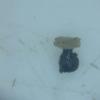

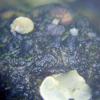
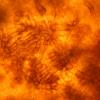

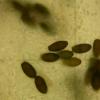

 sur-bouse-11--0001.jpg
sur-bouse-11--0001.jpg


